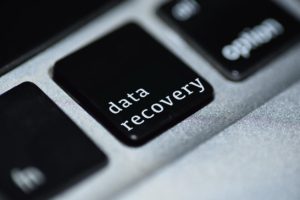Welcome back to the second half of our two-part article on backups and data recovery as an incredibly versatile set of solutions. The beauty of building a layered and comprehensive set of backups with smooth recovery procedures is the ability to recover from almost any setback that even remotely relates to your files. Last time we talked about a few of the often unconsidered risks to your files like failed software updates, failed services, and employee mistakes. These less flashy but far more common risks can put any file system at risk if there’s no way to restore mistakes and failed processes. Backups allow you to restore files back to a previous whole and working state. Automated backups can also help you track down exactly when and why a file corrupted or was changed. Let’s pick up where we left off at how backups can be used to quickly recover from and completely shrug off ransomware attacks.
4. Ransomware Attacks
The current generation of hackers have a personal favorite form of attack that not only ruins your day but also has a chance of getting them paid. You’ve probably heard of ransomware in the recent news because it has been used to terrorize a large section of the computer-using population world-wide. While the exact programs evolve like the yearly flu, the method involves infecting your network, maliciously encrypting every file, then demanding ransom payment in crypto-currency. Rather than paying them or losing your files, you can simply wipe the network and implement your data recovery procedures from a recent complete backup. This method also works for almost any other kind of malicious virus, spyware, Trojan, or malware attack.
5. Programming Errors
When programmers and the IT department make mistakes, the consequences often have a much greater effect than the mistakes of a single employee on their personal system. In many cases, a change to the way the company network or proprietary programs work can cause an error left undetected for days or weeks at a time. Here is where having a collection of regular backups is incredibly helpful. No matter how far back the error was made, a good data recovery system can restore the system to its pristine state before the oversight, allowing your team to fix the problem without a massive loss of data.
6. Device Failure
No matter how convenient remote servers and huge hard drives are, there is one final fact about computing that many people forget. Computers are physical objects and data is stored on disks that can break, fry, melt, warp, scratch, or otherwise become unreadable and unusable. While there are extensive recovery procedures that can sometimes extract data from dead equipment, you can be back to work almost instantly by loading a recent backup onto a new machine and reinstalling it into the company network in the old computer’s place.
The data used, processed, and stored by your company is important for continued functioning and any loss of data can set you back by days, months, or even permanently depending on the value and replicability of the data. Fortunately, there’s no need to risk losing your valuable digital assets, because even software installations and settings configurations can be saved. With a complete data recovery plan, you can restore a single document from backup or reinstall an entire computer after a malware attack, and clone a computer with all its data for new team members. Cloud-hosted backups are an important part of a comprehensive business continuity plan as they can be used both for asynchronous disaster recovery and for hot-loading a second environment while the first is repaired.
For more information on backups and cybersecurity, contact us today!
